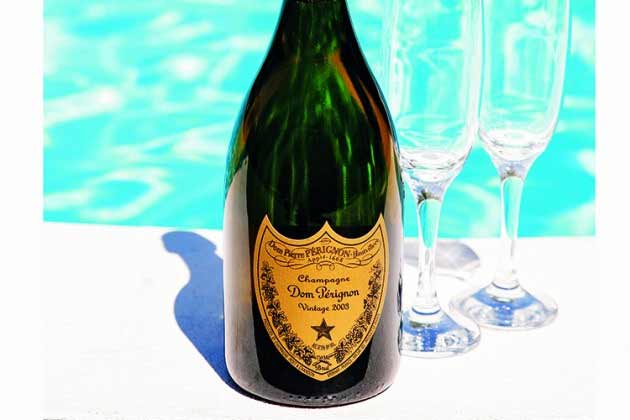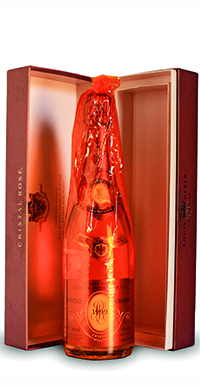In our final instalment from Oz Clarke's book The History of Wine in 100 Bottles, he looks at the long heritage of prestige cuvées.
Prestige Cuvée champagnes don’t get a massively good rap among normal wine drinkers. They’re fiendishly expensive and they often seem to be drunk only by celebs and Eurotrash who’ve definitely got more money than sense.
If you let the whole glitzy nonsense get to you, you could become pretty irritated at the amount of this supposedly gorgeous foaming nectar that is swilled down the gormless throats of the glitterati. So are Prestige Cuvées the pinnacle of the winemakers’ art, or are they an awful lot of style and not a lot of substance? Or can they be fantastically beautiful wines despite being dolled up in courtesan’s glad rags? Well, some of these bottles have a very long heritage. Indeed the rather beautiful pear-shaped and narrow-necked bottle that has its most striking manifestation in the simple elegance of Dom Pérignon—Moët & Chandon’s Prestige Cuvée—dates right back to 1735, when a Royal Decree standardized the size and glass quality of the champagne bottle. Exactly two hundred years later, in 1935, Moët & Chandon produced a couple of hundred bottles very similar in design to the originals as a defiant blow against the ravages of the Great Depression—Dom Pérignon, the first unashamed luxury brand. They make an awful lot more Dom Pérignon nowadays, and it can almost be accused of being too successful a brand to be exclusive any more. Until you taste a perfectly matured bottle, and understand what all the fuss is about.
Roederer Cristal is another wildly successful Prestige Cuvée which genuinely did seem to be exclusive, until “Cris” became all the rage on the New York music scene—and I’m not talking Mozart here. It comes in a clear glass bottle wrapped in orange cellophane. Just a gambit? No, there’s a good reason for it. Although the first commercial release of Roederer Cristal was in 1945, its popularity in Russia began in the mid-1800s. Part of the reason for this was because Roederer played mercilessly on Czar Alexander II’s sweet tooth. Not only did they add 20 percent of sweet liqueur to their wine for the Russian court, but for good measure they threw in a dollop of yellow Chartreuse as well. To distinguish the wine at the czar’s table from the stuff his subjects drank, Roederer came up with the see-through bottle—just for the czar. The others got green bottles. Nowadays, a glass of properly matured Cristal is beautiful wine—and regally dry.
Of course these Prestige Cuvées are drunk by the rich and famous, and of course the companies will charge as much money as they can get away with. And they’ll take advantage of the worlds of music, film, and fashion as much as they can. Perrier-Jouët launched its impressive Belle Epoque Prestige Cuvée in a Paris nightclub to celebrate Duke Ellington’s seventieth birthday. Piper-Heidsieck launched a super-cuvée in 1999 “dressed” by Jean Paul Gaultier. But for all the surface froth, most of the Prestige Cuvées from serious producers really are their most rigorous selection from their very best vineyards, in the finest vintage years. And for that, you’ll pay.
 This extract is from The History of Wine in 100 Bottles by Oz Clarke.
This extract is from The History of Wine in 100 Bottles by Oz Clarke.
More from The History of Wine in 100 Bottles:

History of wine in 100 bottles: Monasteries – Clos de Vougeot

History of Wine in 100 Bottles: The Birth of Claret

History of Wine in 100 Bottles: Tokaji, 1571

History of Wine in 100 Bottles: Barolo









